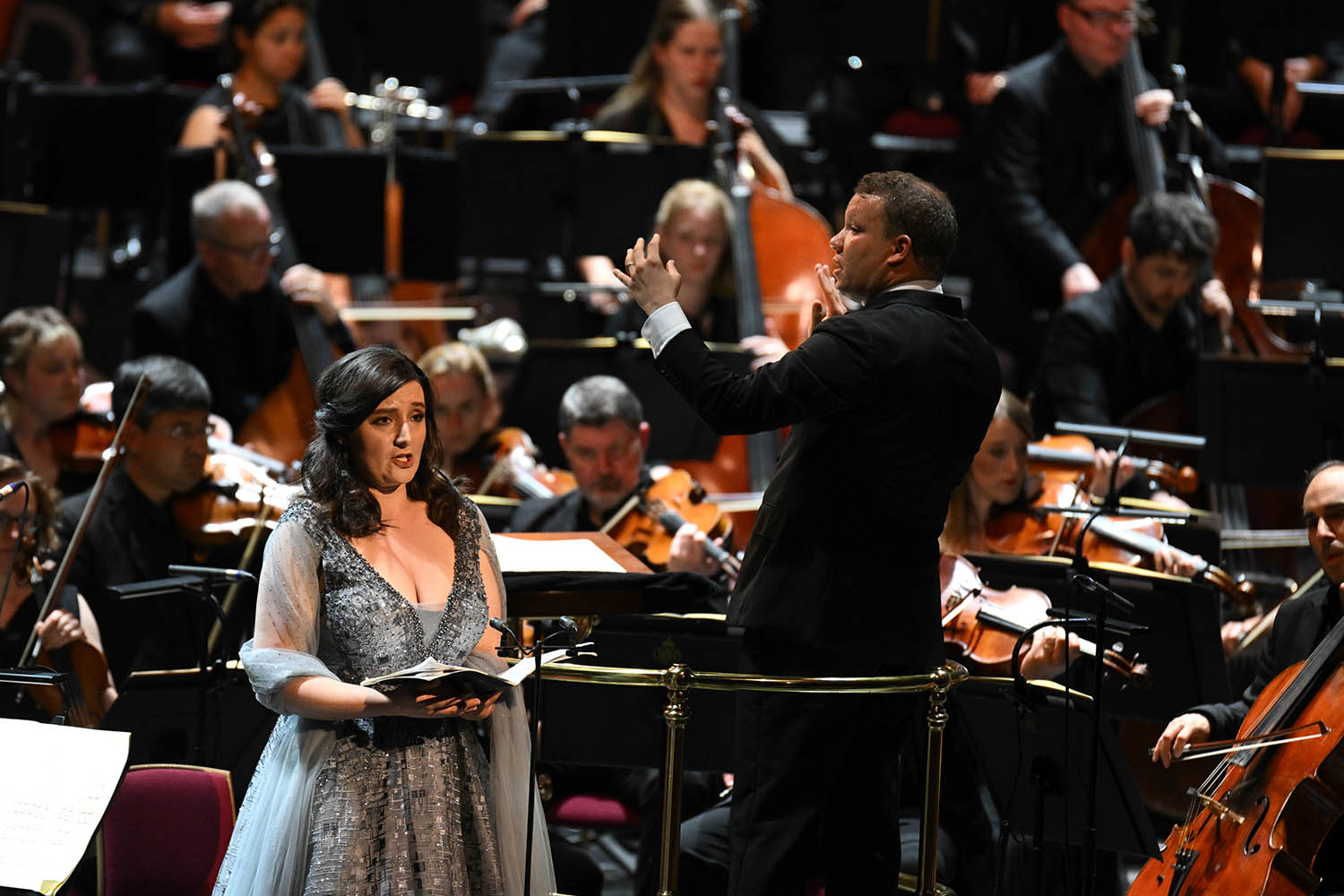The Proms were made for nights such as this. It’s no secret that classical-era symphonies can fail in the cavernous Royal Albert Hall: even Beethoven has played listlessly. Mahler’s Third, a mammoth, 100-minute symphony, is scored for a vast orchestra, two choirs (one comprised of children) and a solo soprano, offering a feast for the eyes as well as the ears. And tonight, the full expanse of the hall was put to use, with snare drums played from the gallery in the first movement, along with the famous horn calls of movement three.
The Prom marked a debut of sorts. In 2019, the BBC National Orchestra of Wales began a cross-Channel artistic collaboration with the Orchestre National de Bretagne. At this performance, members of the latter augmented the former, combined with the BBC National Chorus of Wales and CBSO Children’s Chorus. On the podium was American conductor Ryan Bancroft, who has form in bringing titanic works into dazzling fruition at the Royal Albert Hall – last year’s performance of Verdi’s Requiem was a thrilling season standout.
Mahler premiered his Third in 1902, after a typically torturous composition process. Titles for each of the six movements were dropped before the publication of the final work, but they nonetheless hinted at Mahler’s desire to create a pastoral symphony – an ode to Pan – inspired by the writings of Friedrich Nietzsche. By the time he’d composed the first movement – finished last of the six – he’d begun to see the symphony as something more universal; as “mirroring the entire world”.
Mahler’s Third is one of the great endurance tests in the repertoire, for musicians and Prommers alike
The first movement feels like being served an entire buffet when you only ordered a starter. At more than half an hour, it’s longer than any complete symphony by Haydn or Mozart. No performance can recover from an apathetic first movement, so Bancroft had rehearsed his musicians to perfection, finding immediate punch in the opening French horns and strings. Thereafter, the orchestra displayed astonishing confidence and precision, visibly delighting in the complex interplay of Mahler’s polychromatic score.
The other five movements form a kind of suite in answer to the first. A minuet comes next, played here with requisite elegance and swing. In the third movement, Corey Morris’s horn solo from the gallery, over a lush hum of strings, was stereophonic sound in macro – a moment of pure magic – before Scottish mezzo-soprano Beth Taylor imbued text from Nietzsche’s Also sprach Zarathustra with balminess and meaning, her eyes locked on a single point in the distant reaches of the hall. Then it was over to the choirs, with voices used as rhythmic tools, propelling Mahler’s sonic narrative forward.
The sixth movement begins with a classic Mahler adagio, performed with searing beauty, before gently climbing to the work’s thunderous climax. And yet the finale didn’t quite land forcefully enough. The effect was to leave questions open, which may have been Bancroft’s intention. Equally, on a sweltering night, the orchestra could be forgiven for running out of steam. Mahler’s Third is one of the great endurance tests in the repertoire, for musicians and Prommers alike.
There’s some irony to Mahler’s symphonies only beginning to be widely accepted in the 1960s, helped by the backing of Leonard Bernstein, after which they’ve had a freakish ability to speak to the times. Mahler’s Third felt perennial as read by Bancroft, but still capable of scrutinising humankind and our place in nature, especially in a new age of discombobulating technological acceleration.
However familiar Mahler’s symphonies become, they should always induce anxiety, as Bancroft intrinsically knew. It was the horn from the gallery that lingered – an otherworldly but warm sound that also felt like a warning to never wallow in nostalgia.
Photograph by BBC
